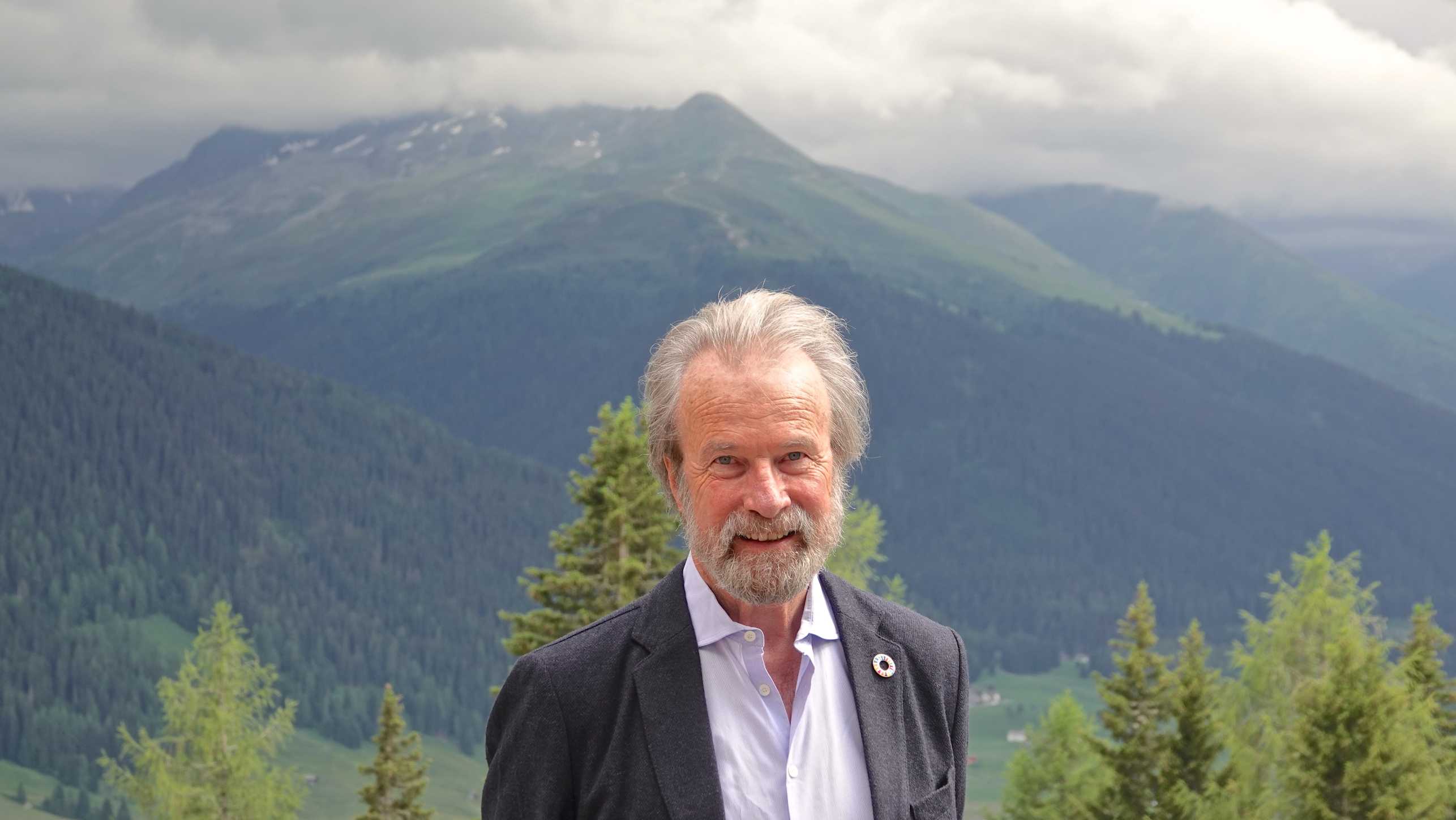Koni Steffen

Konrad Steffen (1952 - 2020)
On 8 August the WSL Director and Professor of Climate and Cryosphere died in an accident while working in Greenland. His ETH colleagues remind us of a man and scientist who leaves an enormous gap.
He was not only spellbound by Greenland’s wildness and beauty, but also driven by concern for its future: Konrad Steffen, 1952 – 2020 (Photograph: ETH Zurich / Giulia Marthaler)
Tall, lean and friendly, with just a touch of mischief about him, Konrad Steffen was a nature lover and a person who got things done – and that is how many of us will remember him. Anyone who spoke to him quickly realised that this was a man with a keen sense of what really mattered. He had vision and was a natural leader, but he was also an attentive listener and worked purposefully and steadfastly to achieve the things that he believed were important.
At ETH Zurich, Konrad Steffen – “Koni” for short – was a professor of climate and cryosphere at the Department of Environmental Systems Science, where he was based at the Institute for Atmospheric and Climate Science. He held his ETH professorship in addition to his main role as director of the Swiss Federal Institute for Forest, Snow and Landscape Research (WSL), as well as a professorship at the School of Architecture, Civil and Environmental Engineering (ENAC) at EPFL. Despite his various duties, Koni frequently attended department and institute conferences, where his contributions were unmistakable – spoken with a Swiss-German timbre and an occasional touch of mischief, but always to the point. Koni was very persuasive.
Before he returned to Switzerland in 2012, Koni had spent some 25 years in Boulder (USA), most recently as director of the Cooperative Institute for Research in Environmental Sciences (CIRES) at the University of Colorado. He always kept open house for visitors, especially those from ETH, as a matter of course – even if they arrived with their whole family in tow. It is no surprise, therefore, that Koni was also an honorary consul of Switzerland. The Swiss flag hung from his house, and he assisted 2,000 people in Colorado with diplomatic matters. How did he find the time and energy for all this?
Although he only returned to Switzerland in 2012, Koni had considerable influence on the scientific and academic direction of his field of work at ETH and in Switzerland in general. This is clear from the creation of six new professorships with a focus on ecology and cryosphere research, in which Koni always kept WSL in mind: three of these professorships are jointly supported by WSL and ETH Zurich or WSL and EPFL, thereby helping to integrate WSL more closely into the academic field; an ETH professorship of “Cryosphere and Climate”, for which the WSL is providing initial support, will continue Koni’s work directly; and two further planned professorships will be based in the canton of Grisons and devoted to the alpine glaciers and the influence of climate change on mountainous regions. It is an immense legacy. Another of Koni’s long-standing dreams was the establishment of the Swiss Polar Institute (SPI), of which he served as scientific director until his death. Koni was convinced that the pooling of activities and the application of Swiss knowledge of alpine glaciology would have huge benefits for the Arctic and Antarctic cryosphere.
He was passionate not only about the Swiss Alps, with their high mountains and narrow valleys, but also about his “Swiss Camp”, the Swiss research station on the flat expanse of the Greenland ice sheet. “What I love about the Arctic is the indescribable vastness… but this is also where we see the changes most clearly,” he said in one of his countless interviews in relation to the global warming that is affecting Greenland and the Arctic sea ice at an ever-increasing pace. Swiss Camp was set up as part of an ETH project and, at Koni’s instigation, also subsequently received funding from NASA. It laid the foundation for a 30-year measurement series that became a key element of climate research. One of Koni’s most spectacular scientific investigations involved studying the impressive and terrifying glacial mills – also known as moulins – that allow meltwater to drain away from Greenland’s icy interior faster than is generally assumed. He was not only spellbound by Greenland’s wildness and beauty, but also driven by concern for its future.
We do not know exactly what happened in Greenland. Koni had walked a short distance away from his colleagues and is thought to have fallen into a water-filled crevasse that was covered with snow. He had enormous experience in dealing with hazards, having worked in Greenland for several years in total. And he knew his surroundings like the back of his hand. How could this happen to him, of all people? All we know for sure is that the treacherous crevasses were not there when Koni’s Swiss Camp was first set up. However, the melting ice means they are increasingly also forming at the camp, and the changes are accelerating due to warming. Koni was aware of the dangers, but perhaps – in a moment of inattention – even he underestimated the power of these changes.
Koni was a nature lover, and he died in his beloved Greenland. Our thoughts are with his family. He was taken from us far too soon, but his scientific legacy will live on. We will not forget him.
